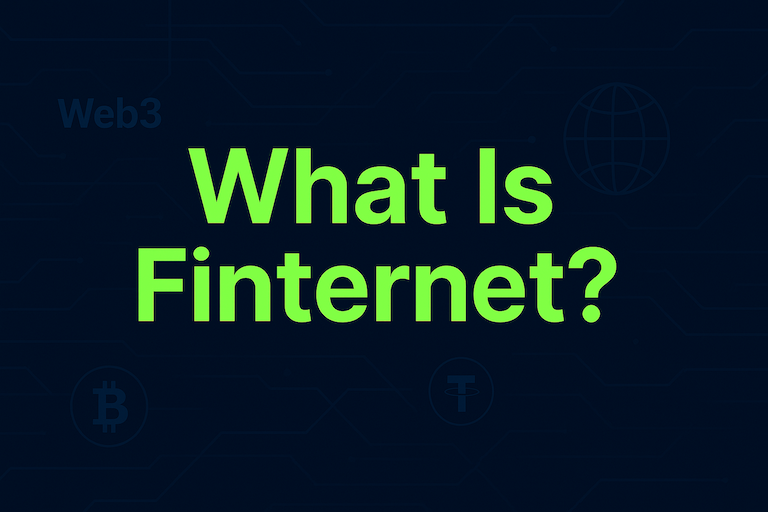Understanding the Stablecoin GENIUS Act: A New Era for Crypto Newbies
Jul 3, 2025
As the world of cryptocurrency continues to evolve, stablecoins have emerged as a crucial player in creating stable and reliable digital currencies. With the recent introduction of the Stablecoin GENIUS Act, understanding this legislation is particularly important for those new to the crypto world. This article will help demystify the Stablecoin GENIUS Act and explain what it means for new crypto users, providing a solid foundation to begin exploring this captivating digital frontier.
What is the Stablecoin GENIUS Act?
The Stablecoin GENIUS Act, officially known as the Guiding and Establishing National Innovation for U.S. Stablecoins Act, represents the United States' move to regulate stablecoins, which are cryptocurrencies tied to the value of stable assets, such as the U.S. dollar or gold. This act aims to bring more oversight, clarity, and trust to the stablecoin market, facilitating wider adoption and encouraging innovation in the digital currency space.
How Do Stablecoins Work?
Stablecoins are a type of cryptocurrency that maintain their value by being pegged to a stable asset, reducing the volatility commonly associated with digital currencies like Bitcoin. They can serve as a digital equivalent of fiat currencies like the U.S. dollar, making them more suitable for ordinary transactions. For example, popular stablecoins like Tether (USDT) and USD Coin (USDC) are pegged to the U.S. dollar and maintain a value close to it, facilitating quick and secure transactions without the risk of significant price swings.
Key Features of the GENIUS Act
The GENIUS Act introduces several key provisions aimed at regulating the issuance and use of stablecoins in the United States:
Reserve Requirements: Issuers of stablecoins must maintain reserves equivalent to the value of the coins issued, such as U.S. dollars or government securities, ensuring they can meet redemption requests and maintain trust.
Transparency and Audits: Stablecoin issuers are required to conduct monthly audits and disclose their reserve holdings publicly, promoting transparency and confidence among users.
Regulatory Oversight: The act grants regulatory authority to federal bodies like the Federal Reserve and the Department of Treasury to oversee stablecoin issuers, ensuring compliance with existing laws and regulations.
Consumer Protections: The legislation incorporates measures that prioritize stablecoin holders in case of issuer insolvency, protecting consumers' investments.
Benefits of the Stablecoin GENIUS Act
For new crypto users, the GENIUS Act could present several advantages:
Increased Trust: By establishing clear guidelines and oversight, the GENIUS Act may increase trust in stablecoins, attracting more users to the crypto ecosystem.
Wider Adoption: The clarity provided by the legislation could encourage more merchants and financial institutions to adopt stablecoins, expanding their utility in everyday transactions.
Innovation Encouragement: With a robust regulatory framework in place, the act encourages further innovation in stablecoin technology and blockchain applications, potentially leading to more convenient and efficient financial products.
Use Cases for Stablecoins Under the GENIUS Act
One of the most promising aspects of stablecoins is their potential to seamlessly integrate into everyday financial transactions. Some use cases include:
Remittances: Stablecoins can be used for international money transfers, offering a cost-effective and rapid alternative to traditional money transfer services.
Decentralized Finance (DeFi): Stablecoins facilitate various DeFi applications, enabling users to lend, borrow, and earn interest on their crypto assets without the volatility associated with other cryptocurrencies.
Cross-Border Payments: With stable value, they are ideal for quick and secure cross-border payments, reducing reliance on slow and expensive traditional banking systems.
Security Considerations for New Users
As with any financial investment, it is important for new users to be aware of potential security risks associated with stablecoins:
Custodial Risks: Ensure that your stablecoins are stored with reputable custodians or within secure crypto wallets that support strong security measures like multi-signature authentication.
Platform Risk: Choose trading platforms or exchanges that are compliant with regulatory requirements and have strong security measures to protect user funds.
Education and Caution: Stay informed about the latest developments in crypto regulations and exercise the same level of caution as you would with any other financial instrument.
Conclusion
The Stablecoin GENIUS Act plays a crucial role in defining a clear path for the future of stablecoins, providing a legal framework that encourages safe and secure use for new crypto users. With increased oversight and transparency, newcomers can confidently explore the possibilities of digital currencies in stable transactions. Now that you have a basic understanding of the Stablecoin GENIUS Act, consider how you might incorporate stablecoins into your digital financial journey. Take the opportunity to learn more about regulated platforms offering security and compliance to safely begin your exploration.
Start your safe cryptocurrency journey now
Fast and secure deposits and withdrawals, OSL safeguards every transaction !


